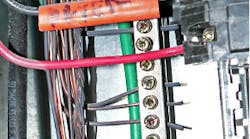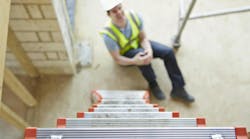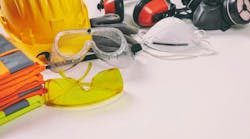Since December 2008, the U.S. Consumer Product Safety Commission (CPSC) has received 3,628 reports from residents in 39 states, the District of Columbia, and some of its territories concerning problem drywall manufactured in China. More than half of these reports have originated in Florida, with others coming from states that also experienced a large increase in new construction and remodeling after hurricanes devastated areas of those states in 2004 and 2005 (see Pie Chart). The homes covered in the reports were largely built in 2006 and 2007, although there have been notifications of problem drywall present in homes newly built and renovated as early as 2001 and as recently as 2008.
An October 2009 study of chemical emissions from samples of drywall requested by CPSC and conducted by Lawrence Berkeley National Laboratory (LBNL) revealed the presence of elemental sulfur in Chinese drywall but not in non-Chinese drywall. In fact, chamber studies showed that Chinese drywall produced in 2005 and 2006 emits volatile sulfur compounds at a rate almost 100 times greater than non-Chinese drywall samples. For tables of the preliminary data, visit the CPSC website at http://www.cpsc.gov/info/drywall/LBNLsulfur.pdf.
The top 10 reactive sulfur-emitting samples were all from drywall manufactured in China; however, not all Chinese drywall samples emitted compounds at that rate. For a list of manufacturers of problem drywall, visit the CPSC website at http://www.cpsc.gov/cpscpub/prerel/prhtml10/10243.html. For further information regarding drywall studies, visit www.drywallresponse.gov.
Identification guidance
In January — and again with revisions in August — CPSC and the U.S. Department of Housing and Urban Development (HUD) released an interim guidance for identifying the presence of offending drywall based on preliminary results of recent tests and recommendations by the Federal Interagency Task Force on Problem Drywall, made up of members of CPSC, HUD, U.S. Environmental Protection Agency (EPA), and Centers for Disease Control and Prevention (CDC). Although many of the homeowners’ reports cite a “rotten egg”-like odor — often associated with sulfur-based gases including hydrogen sulfide — as well as health concerns, such as irritated, itchy eyes and skin; difficulty breathing; persistent cough; bloody noses; recurrent headaches; sinus infection; and asthma attacks, the preliminary guidance bases initial, or threshold, identification, on evidence of drywall installation during the corresponding time period (between 2001 and 2008) and the presence of metal corrosion. Satisfaction of both criteria is a prerequisite to further investigation.
The corrosion includes the blackening of copper electrical wiring (Photo) and/or air-conditioning evaporator coils. “The first sign that most homeowners notice is that there’s a problem with the air conditioner,” says Allison Grant, Esq., a partner with Shapiro, Blasi, Wasserman & Gora, P.A., Boca Raton, Fla.
Grant began specializing in Chinese drywall cases after she discovered a condominium she owns was built with the offending gypsum. Currently, she represents close to 700 homeowners. “The air conditioner starts leaking Freon, so the tech comes out and keeps pumping it full of Freon, and then you need to replace the coils,” continues Grant.
The characteristic metal corrosion in homes can be caused for reasons other than problem drywall, such as volatile sulfur compounds from sewer gas, well water, and outdoor contaminants that may enter the home independent of the drywall. The guidance also cautions against misclassification of homes as having no drywall problem due to the absence of characteristics found to be typical in the limited testing to date. Therefore, corroborating evidence is needed for positive identification of problem drywall, including:
- Corrosive conditions in the home, demonstrated by the formation of copper sulfide on copper “coupons,” or test strips of metal, placed in the home for a period of two weeks to 30 days or confirmation of the presence of sulfur in the blackening of the grounding wires and/or air-conditioning coils.
- Confirmed markings of Chinese origin on drywall in the home.
- Elemental sulfur levels in samples of drywall core found in the home exceeding 10 ppm.
- Elevated levels of hydrogen sulfide, carbonyl sulfide, and/or carbon disulfide emitted from samples of drywall from the home when placed in test chambers using ASTM Standard Test Method D5504-08 or similar chamber or headspace testing.
- Corrosion of copper metal to form copper sulfide when copper is placed in test chambers with drywall samples taken from the home.
Homes must exhibit at least two corroborating conditions if the new drywall was installed between 2005 and 2008. For those between 2001 and 2004, at least four must be evident.
Remediation guidance
As a follow-up to the identification guidance, in April, CPSC and HUD issued interim remediation guidance for homeowners and contractors tasked with the removal of the problem drywall and the replacement of metal components in electrical and mechanical systems compromised by drywall-induced corrosion, based on the drywall task force recommendations. The guidance recommends a “conservative, common-sense approach,” calling for the replacement of all possible problem drywall; all fire safety alarm devices, including smoke alarms and carbon monoxide alarms; all electrical components and wiring, including outlets, switches, and circuit breakers; and all gas service piping and fire suppression sprinkler systems. “Out of an abundance of caution, our current recommendation is that these items should be removed,” says Alex Filip, deputy director, office of information and public relations, CPSC.
However, the task force recognizes that other remediation approaches could ultimately prove more cost-effective and/or less extensive, such as the preservation of insulated wiring, provided all testing and remediation work is conducted in compliance with applicable building codes, occupational safety and health standards, and environmental regulations. But additional study is required on such approaches, according to the guidance. Ongoing CPSC studies on long-term corrosion, due later in 2010, should provide relevant scientific information. “We are testing electrical components, such as outlets and smoke alarms, to see what the impact of the corrosion is on them,” Filip says. “The results should be available around the end of the year.”
A guideline for drywall remediation, considered a remediation protocol instead of a fire safety guidance, was issued by U.S. District Judge Eldon Fallon of the Eastern District of Louisiana in April. This protocol encompasses a wider scope than that of fire safety, the major consideration of the CPSC. That month, in a non-jury trial limited to property damage, Judge Fallon ordered Chinese drywall manufacturer Taishan Gypsum Co., Ltd. to pay more than $2.6 million to seven Virginia families facing remediation costs in removing that company’s plasterboard from their homes. It was the first decision in a Chinese drywall case. In the ruling, Fallon recommended the replacement of all drywall; all insulated and uninsulated wiring; all copper pipes; the entire HVAC system; most appliances (particularly refrigerators); electronics, such as TVs and computers; all carpeting; hardwood and vinyl flooring; tile floor, unless it can be protected during remediation; cabinets and countertops; trim, molding, and baseboards; and bathroom fixtures.
“It was originally thought you could just snip back the ground wires and take care of the drywall, and you’re good to go,” says Grant. “But what our experts are telling us is that that’s not sufficient because the gases still continue to corrode that wiring. So you may think you have clipped it and have a nice clean margin, but you don’t. It affects insulated wires too. There are always going to be people who disagree, but it’s the final word from the court.”
In the second drywall trial that month, Judge Fallon ordered Knauf Plasterboard Tianjin Co. Ltd. to pay Tatum and Charlene Hernandez more than $164,000 to cover the costs of removing the sulfur-emitting drywall from their home in Mandeville, La., along with replacing corroded electrical wiring, damaged plumbing, and making other fixes necessitated by the company’s defective drywall product. “No reputable contractor would accept the risk of keeping copper and/or silver metal in the home after these materials existed in a corrosive environment and demonstrate significant corrosion, and neither would a reputable environmental consultant approve a remediation of the Hernandez home if the potential of continuation for such a corrosion risk remains,” wrote the judge in his 47-page decision.
The judge refuted defense claims that the families could have scrubbed away the black soot linked to the corrosive drywall. “It is not possible or feasible to clean the wires to render them sufficiently free of corrosion as suggested by defendant,” Judge Fallon wrote. “Although scrubbing the wires may remove visible signs of black corrosion film, copper sulfide corrosion remains. Moreover, it is not feasible to scrub the insulated wires to remove the corrosion under the insulation. There does not exist an approved standard or method to clean copper sulfide corrosion from electrical wiring in a home.”
Julie Miller, owner of Kogen Construction, Boca Raton and Palm Beach, Fla., which specializes in new construction, remodeling, and Chinese drywall removal, agrees with Judge Fallon’s ruling. “I remove everything,” she says. “I remove all the outlets and switches, and I do not reuse them. On my first drywall project, the corrosion traveled all the way down into the wire on the chandelier. Every house is different, but unless you take it down and look at it, you just don’t know.”
Fortunately, because the hydrogen sulfide is naturally occurring, it’s not considered toxic in the environment, so the items pulled out of renovated houses can go into landfills, according to Filip. “It can be disposed of like you would any normal construction debris,” he says.
Tom Vasquez of Keling Electric, Oakland Park, Fla., has witnessed drywall remediation projects in which the homeowner, in an effort to save money, replaced only the outlets and switches. “She cut back any wire inside the boxes that was discolored or had the black residue on it,” says Vasquez. “So she didn’t replace all the wires in the house, but replaced all the devices and cut back whatever wire was found to be discolored or had residue on it.”
According to Vasquez, some electricians will remove and replace anything in the house exactly as it was. He has seen some contractors wash and vacuum out recessed luminaire housings and plastic and metal boxes — items without copper — and reuse them. “They pretty much keep anything in the walls that isn’t copper or doesn’t have anything copper related to it,” he says. “A lot of people think it can be reused and don’t understand why it has to be scrapped when they can just clean it and reuse it. But lots of people are skeptical about reusing it.
“In some cases, the homeowners are taking it on themselves to pay for the remediation, so they’re trying to get it done as quickly and cheaply as possible, because the longer they’re out of the house, the more they have to pay for a hotel or a house that they’re renting,” Vasquez explains.
That being said, Vasquez has also worked on houses where the electrical system was completely stripped and brought to the scrap yard and a new system installed in its place. “We removed every single stitch of wire out of the house — low- and high-voltage,” he says.
The issue of repair or replace may be decided by more than expense, according to David Wojcieszak, P.E., LEED AP, and principal at Wojcieszak & Associates, Inc., Stuart, Fla. In the white paper “Repairing Electrical Installations Associated with Chinese Drywall,” to be used in conjunction with a field evaluation from a licensed professional with experience in electrical systems contaminated by the off-gassing of Chinese drywall or other indoor contaminants, Wojcieszak sets forth an additional protocol for drywall remediation, based on the NEC provisions for corroded systems, as well as state and local codes for his geographic location.
At minimum, the report recommends the insulated conductors can be cut back, the insulation stripped away, and the bare conductor reconnected. But this can be accomplished only if the newly exposed conductor has not been affected, and the remaining conductor length at receptacle and switch box locations meets the minimum 6-in. requirement dictated by NEC 300.14 for branch circuits. The conductor shall be replaced in its entirety if either condition is not met. The exposed ground conductor can be cleaned and reattached, but it must also meet the 6-in. requirement.
The report also outlines the protocol for working at the electrical load center. Remove all circuit breakers from the electrical panel. Evaluate the panel buss structure. If the buss is tin-plated copper, it normally can be cleaned and reused; however, a copper buss must be replaced. Evaluate the branch circuit and feeder conductors for corrosion, as described above, and repair or replace as required. Replace all copper ground bars or copper neutral bars as required, and install new circuit breakers.
Cleaning of the conductor ends is not recommended if sufficient good conductor length is available to clip off the formerly exposed end and reattach the newly exposed conductor. It is also not recommended to use any corrosion inhibitor on the new connections — you should clean the exposed lengths of uninsulated ground conductors with an approved lubricant cleaning agent.
Wojcieszak’s report separates light fixtures into two distinct categories: recessed and surface mount. Recessed fixtures have been found to be the least affected. The exposed, uninsulated ground wire located in the fixture junction box is a good indicator as to whether the fixture should be replaced. A black or corroded ground wire indicates a new fixture is required. A clean ground wire indicates the fixture may be reused if other current-carrying components are evaluated and determined to be safe. Surface-mount fixtures can be evaluated in a similar manner as recessed fixtures. At a minimum, exposed 2-conductor cords on any pendant-type fixture should be replaced.
Low-voltage systems, such as telephone, television, and computer systems, may exhibit more severe effects than the power system components. It can be more cost-effective to replace low-voltage cables, terminals, and splice blocks. All low-voltage panels and devices should also be replaced.
Money issues
Despite early victories in bellwether cases and some initial settlements, it may take some time for litigation to bring remediation monies to homeowners. Calling the homeowners’ problems with Chinese drywall a product defect rather than a major disaster, the Federal Emergency Management Agency (FEMA) has denied Florida Gov. Charlie Crist’s request asking for financial aid for victims. In addition, despite a ruling in Louisiana that the “pollution exclusion,” as well as other exclusions, such as “latent defects” and “faulty, inadequate, or defective planning,” does not apply to Chinese drywall, insurance companies in many cases are denying homeowners claims and even dropping their policies.
“I wouldn’t say that this is a huge business opportunity for electrical contractors,” Miller says. “There’s going to be work, but it is going to be very slow.”
Recently, a few programs have allotted help for homeowners battling corrosion from the problem drywall. HUD has told cities, counties, and states that receive money from its Community Development Block Grant program that the money can be used to help affected homeowners. HUD said that homeowners should contact local governments about aid and has also asked its FHA mortgage lenders to extend temporary relief to drywall-affected homeowners.
On October 4, the Internal Revenue Service (IRS) implemented tax breaks called Revenue Procedure 2010-36 on drywall repair due to flawed Chinese drywall. The IRS is allowing taxpayers to claim a casualty loss on the repairs of the drywall as well as the home appliances affected by the defective drywall. The IRS recommends homeowners submit a completed amended tax return claiming the deductions. Amended returns can be filed for only three years prior to the current tax year. Forms and further details are located at the irs.gov website.





